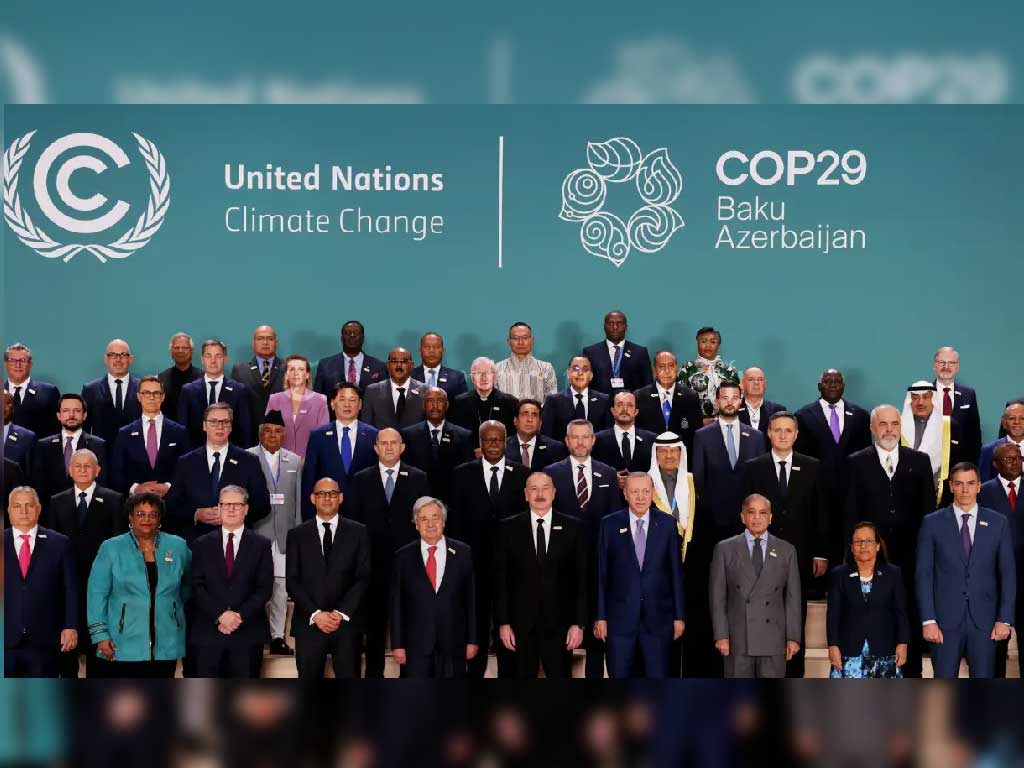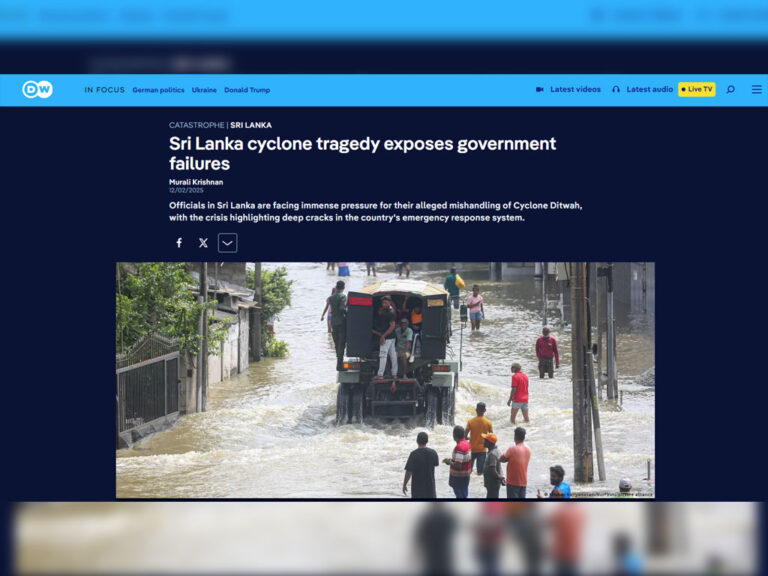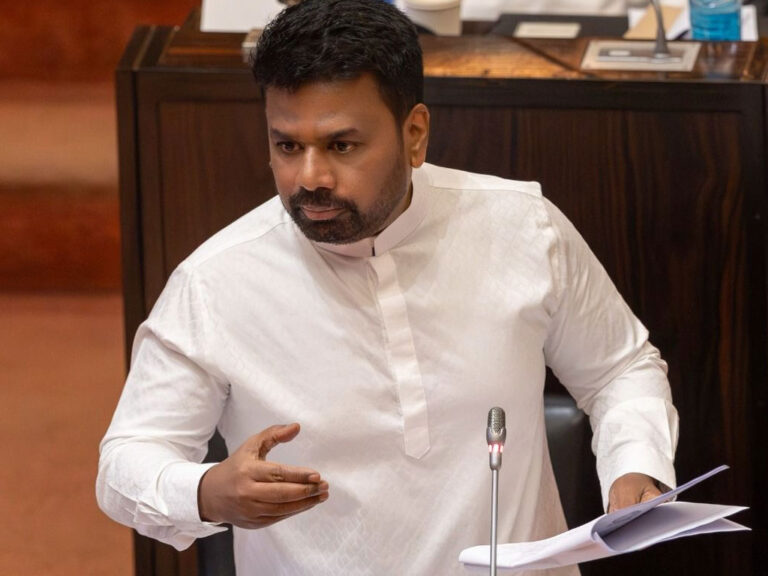
At the COP29 summit in Baku, world leaders reached an agreement to establish a $300 billion global finance target aimed at supporting developing nations facing the devastating impacts of climate change. The agreement, finalized after two weeks of tense negotiations, is meant to provide financial assistance to countries struggling with the consequences of global warming, including extreme weather events such as floods, droughts, and storms. However, the deal has been heavily criticized by many developing countries, who argue that the amount pledged is grossly inadequate given the scale of the climate crisis.
The deal sets a target of $300 billion annually by 2035, marking a significant increase over the previous commitment of $100 billion per year in climate finance, which was supposed to be delivered by 2020 but was only met two years late, in 2022. While some delegates at the summit celebrated the agreement, others were vocal in their disapproval. Indian delegation representative Chandni Raina, for example, described the deal as an “optical illusion” that would not address the full extent of the challenges faced by vulnerable nations. “We oppose the adoption of this document,” Raina said, echoing the frustration of many developing countries who feel that their urgent needs are being overlooked.
United Nations climate chief Simon Stiell acknowledged the difficulties that negotiators had faced in reaching an agreement but defended the deal as a critical step forward. “This deal will keep the clean energy boom growing and protect billions of lives,” he said. “But like any insurance policy, it only works if the premiums are paid in full and on time.” Stiell’s comments underscored the importance of ensuring that wealthy countries fulfill their financial commitments to help mitigate climate change.
The $300 billion target, which is a step up from previous financial commitments, will still fall short of the broader goals needed to address the scale of climate challenges. Many negotiators are now calling for a more comprehensive approach to climate financing, with the United Nations estimating that as much as $1.3 trillion per year will be needed to fully address the impacts of climate change. Developing nations, which have contributed least to global emissions but are disproportionately affected by climate change, argue that industrialized countries, which have historically been the largest emitters of greenhouse gases, must take on greater responsibility for funding climate action.
The agreement reached at COP29 lays the groundwork for future climate summits, with the next major gathering scheduled for 2025 in Brazil. The deal aims to accelerate the transition away from fossil fuels and bolster renewable energy capacity, a key goal of the 2015 Paris Agreement. However, discussions at COP29 revealed deep divisions between wealthy and developing nations over the financial responsibility of industrialized countries, particularly when it comes to compensating developing nations for the damage caused by climate-related events.
During the summit, many developing countries expressed dissatisfaction with the pace of progress and the scale of funding allocated to address the growing climate crisis. A number of island nations and other vulnerable states walked out of the talks in frustration, arguing that the agreement did not go far enough. Tina Stege, climate envoy for the Marshall Islands, said that while the deal is a step in the right direction, it does not provide nearly enough support to countries in urgent need of climate financing. “We are leaving with a small portion of the funding climate-vulnerable countries urgently need. It isn’t nearly enough, but it’s a start,” she said.
The deal was also criticized for lacking specific mechanisms to hold countries accountable for meeting their financial commitments. Some negotiators noted that Saudi Arabia had actively resisted calls to increase the ambition of the deal, particularly when it came to scaling up renewable energy efforts and reducing fossil fuel dependency. “There’s definitely a challenge in getting greater ambition when you’re negotiating with the Saudis,” said U.S. climate adviser John Podesta, referring to the oil-rich nation’s reluctance to commit to more aggressive climate action.
The funding agreement also revealed the complexities of defining which countries are considered “developed” and therefore required to contribute to the climate finance pool. The list of industrialized nations that are expected to contribute has not changed since the 1992 United Nations Framework Convention on Climate Change (UNFCCC) negotiations, but there is increasing pressure for other countries like China, the world’s second-largest economy, and oil-rich Gulf states to contribute as well. While the deal encourages developing nations to make contributions, it does not mandate it, leaving some concerned about the fairness of the financial distribution.
Another key aspect of the deal is the creation of a global carbon credit market that could potentially mobilize billions of dollars to fund projects aimed at reducing greenhouse gas emissions. The market is intended to allow countries and corporations to buy and sell carbon credits, which can then be used to finance climate mitigation and adaptation projects, such as reforestation or the development of renewable energy technologies. Proponents of this market believe it could help generate the funds necessary to combat climate change, though skeptics question its effectiveness in addressing the root causes of the crisis.
As the world continues to grapple with the reality of climate change, the timing of the COP29 agreement comes amid growing concern about the future of U.S. climate commitments. The recent U.S. presidential election has raised doubts about whether President Donald Trump, who has previously called climate change a “hoax,” will continue the U.S. government’s financial support for climate action once he takes office in 2025. While outgoing President Joe Biden praised the COP29 agreement as an “historic” step, he acknowledged that more work remains to be done to meet global climate targets. “While there is still substantial work ahead of us to achieve our climate goals, today’s outcome puts us one significant step closer,” Biden said in a statement.
The mounting tension over financing for climate action is compounded by the reality of a warming planet. Scientists predict that 2024 will be the hottest year on record, with catastrophic weather events already occurring across the globe. The year has seen widespread flooding in Africa, deadly landslides in Asia, and extreme droughts in South America, highlighting the urgency of addressing climate change. Even developed countries have experienced devastating climate events, such as the floods in Spain that claimed over 200 lives and 24 billion-dollar disasters in the U.S. alone this year.
While the COP29 deal represents a step forward, the negotiations reveal the deepening divisions between rich and poor nations in addressing climate change. With the world on track for a potential 3.1°C of warming by the end of the century, the international community will need to take much bolder action to curb emissions, raise the necessary funds for adaptation, and ensure that vulnerable countries are not left behind in the fight against climate change. The pressure is on to deliver on these promises, with time running out to avoid the most catastrophic impacts of global warming.





